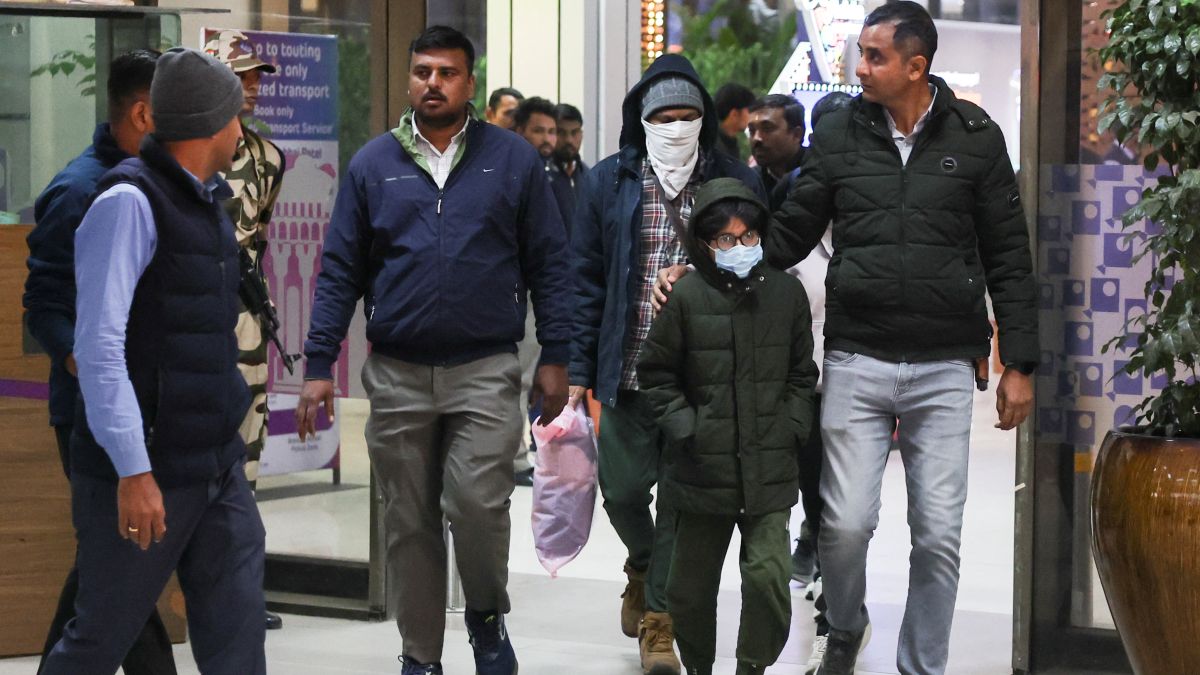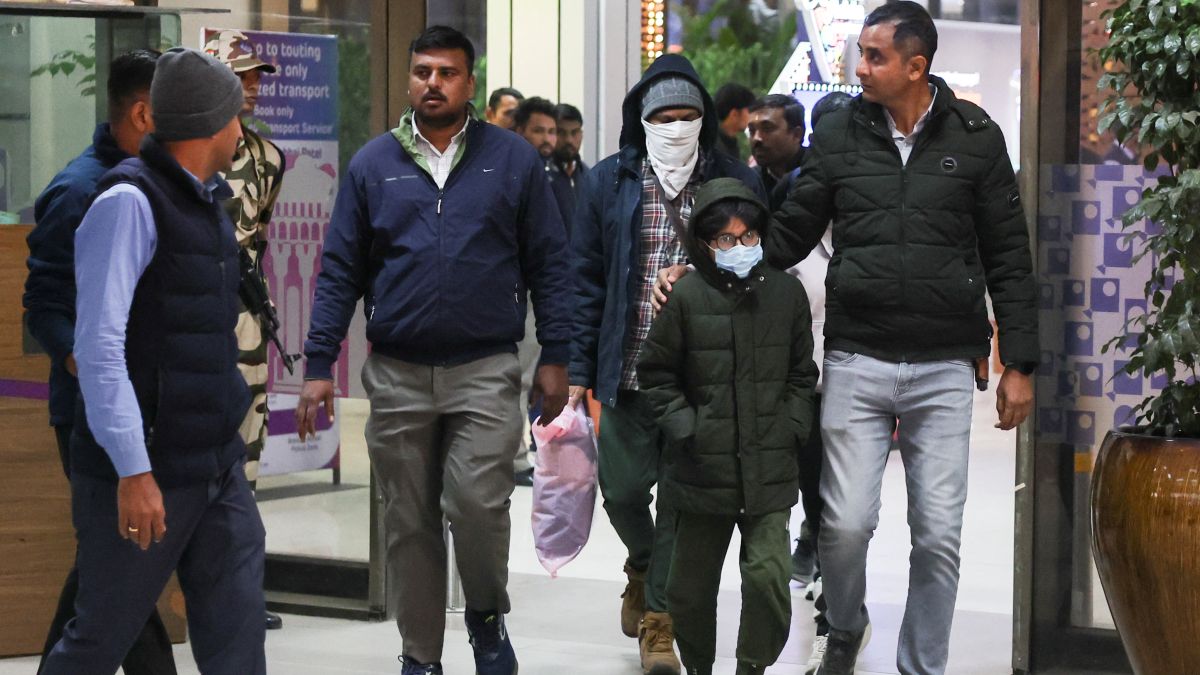Heathrow Airport, the busiest in the UK, has been forced to close following a significant power outage caused by a fire at a nearby electrical substation in Hayes, west London.
The incident, which occurred late Thursday night, led to a major disruption in flight schedules, affecting thousands of passengers worldwide.
The London Fire Brigade (LFB) responded swiftly, with ten fire engines and about 70 firefighters tackling the blaze. Though the fire is now under control, authorities have yet to determine its cause.
Emergency services were called to the scene at 23:23 GMT, and the resulting explosions and fire led to power cuts in nearly 5,000 homes. A 200-meter safety cordon was established, and residents were advised to keep doors and windows shut due to heavy smoke.
The airport confirmed that all operations would remain suspended until 23:59 on March 21, 2025, urging passengers to avoid travelling to the airport and to contact their airlines for further updates.
How flights have been affected across the globe
The closure of Heathrow has triggered a ripple effect across the global aviation network.
Over 1,351 flights were scheduled to operate through the airport on Friday, affecting up to 291,000 passengers.
According to Flightradar24, at least 120 inbound flights had to be diverted early on Friday morning, while many others turned back to their point of departure.
Today’s total closure of London-Heathrow will affect at least 1,351 flights to/from LHR.
— Flightradar24 (@flightradar24) March 21, 2025
That doesn’t include any flights that might be canceled or delayed due to aircraft being out of position. pic.twitter.com/WikVJsCxDK
Major airlines have been forced to reroute or cancel flights:
British Airways, Heathrow’s largest carrier, had 341 flights scheduled on Friday.
Qantas Airways diverted flights from Perth and Singapore to Paris, arranging alternative transportation for passengers.
United Airlines redirected flights from New York and San Francisco, with some turning back mid-air. Seven United flights returned to their origin or were diverted to alternative airports.
Air India returned flights to Mumbai and Delhi and cancelled all remaining Heathrow-bound flights for the day, though its services to London Gatwick remain unaffected.
Singapore Airlines cancelled five flights and diverted others, affecting at least eight scheduled services.
Virgin Atlantic suspended all Heathrow arrivals and departures until midday on March 21.
Cathay Pacific cancelled all its London-bound flights, including CX239 and CX253 from Hong Kong.
Emirates cancelled flights EK001/002, EK029/030, and EK031/032.
Etihad Airways diverted flight EY61 from Abu Dhabi to Frankfurt and cancelled flights EY63, EY64, EY65, and EY66.
Aer Lingus cancelled all flights to and from Heathrow until further notice.
Scandinavian Airlines (SAS) cancelled all 12 scheduled round trips to and from Heathrow.
Amsterdam’s Schiphol Airport reported about 15 cancellations related to Heathrow’s closure.
Spain’s airport operator Aena reported disruptions to at least 54 flights across Madrid, Barcelona, Malaga, Tenerife and Valencia, with 20 cancellations as of early Friday.
Ireland has also seen significant impacts, with Shannon Airport accommodating multiple transatlantic flights originally bound for Heathrow, including routes from Toronto, Boston, Orlando, and Newark.
The Heathrow-Dublin flight path, one of the busiest in Europe, was significantly affected, with at least 34 scheduled flights impacted. In total, around 70 flights to and from Ireland were cancelled.
Aviation crisis likened to 9/11-like situation
The scale of disruption at Heathrow is being likened to past aviation crises such as the September 11 attacks in 2001 and the 2010 volcanic ash cloud from Iceland’s Eyjafjallajokull eruption.
Aviation consultant John Strickland told British PA news agency, “It’s a contained version of 9/11 or, to an extent, the Icelandic volcanic eruption…that’s the parallel I would make.”
He noted that Heathrow’s full capacity leaves little flexibility for handling such emergencies.
The UK’s Air Traffic Control has implemented contingency measures, including diverting aircraft to non-UK airports and halting flights before departure.
The last time Heathrow faced such extensive disruption was in 2010 when a volcanic eruption and heavy snowfall led to days of flight cancellations.
Airlines rely on meticulously planned schedules, with aircraft and crew strategically stationed across different hubs. With such a critical transit point unavailable, many carriers are struggling to realign their networks.
European airports including Frankfurt, Paris Charles de Gaulle, Amsterdam Schiphol, Madrid Barajas and Shannon in Ireland have received diverted flights, adding strain to their own schedules.
North American airports, including Newark, Washington DC, Toronto and Atlanta, have also been affected, with flights either redirected or sent back to their departure points.
The disruption has also caused long-haul flights to Asia and Australia to be rerouted or cancelled, particularly affecting key routes operated by Qantas, Singapore Airlines and Cathay Pacific.
With many flights stranded at alternative locations, airlines now face logistical challenges in repositioning aircraft and crew.
With Heathrow expected to remain closed until late Friday night, airlines and passengers are scrambling to adjust their plans. The airport has apologised for the inconvenience, stating that the priority is ensuring safety and restoring power as soon as possible.
UK Energy Secretary Ed Miliband has vowed to investigate the cause of the fire and assess what lessons can be learned from the incident.
Travellers scheduled to fly through Heathrow are advised to stay in close contact with their airlines for updates and alternative travel arrangements. Given the scale of the disruption, the effects are likely to be felt for several days, with flight schedules taking time to return to normal.
Heathrow Airport was handling 83.9 million passengers last year. That gives about 220k passengers per day. pic.twitter.com/kymm3VpH6N
— Flightradar24 (@flightradar24) March 21, 2025
Industry experts warn that as flight backlogs accumulate, re-bookings will be difficult and passengers should prepare for potential extended delays. Airport authorities have stated that they are working closely with airlines to minimise further disruptions.
As Heathrow works to resolve the crisis, passengers worldwide will need to prepare for delays, cancellations and potential reroutes as the aviation industry grapples with one of the most significant airport shutdowns in recent memory.
Also Watch:
With inputs from agencies


)
)
)
)
)
)
)
)
)



